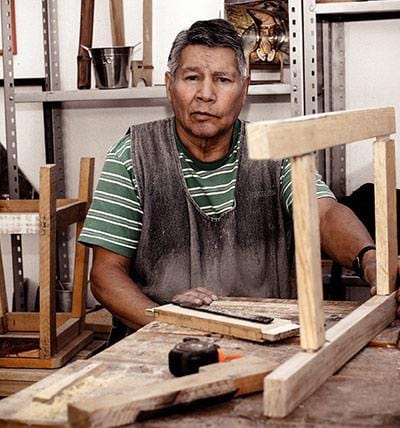Who was the genius behind the captivating world of jigsaw puzzles? Let's dive into the intriguing history of these mind-bending pastimes that have brought frustration and delight to millions of global puzzlers.
Picture this: it was the late 1760s, when cardboard puzzles were but a twinkle in the eye of innovation. Enter John Spilsbury, a mapmaker and engraver with a knack for problem-solving.
With a piece of wood and a brilliant idea, he dissected maps and mounted them onto the wood, creating the world's first jigsaw puzzle. These interlocking pieces, like pieces of a grand puzzle, would revolutionize entertainment for generations to come.
Fast forward a few years, and puzzles became the talk of the town, spreading like wildfire. The fever caught on, and by the early 20th century, Parker Brothers had sold over 10 million puzzles worldwide.
So, my friends, let's embark on this journey, exploring the birth of the jigsaw puzzle and the minds that gave life to these captivating pastimes.
The History of Puzzles: Tracing the Origins of Jigsaw Puzzles

Let's journey back in time as we trace the fascinating origins of jigsaw puzzles.
Here's a bullet list to guide us through the historical maze:
- The year was 1767, and the brilliant Archimedes of puzzles, John Spilsbury, crafted the world's first puzzle. Talk about a game-changer!
- Fast forward a few centuries, and the treadle of progress kept on turning. People discovered a new way to create puzzles by pasting maps onto wood—a jig of innovation, if you ask me.
- The popularity of puzzles soared, and enthusiasts eagerly awaited the next installment. Enter the "jig of the week," a delightful challenge that kept minds engaged and spirits high.
- Oh, the joy of the jig! People would gather around, sharing laughter and friendly competition, solving these brain-teasers piece by piece.
- The jigging frenzy continued, captivating hearts and minds across the globe. Jigsaw puzzles became a cherished pastime, offering solace and excitement in a rapidly changing world.
So there you have it, a whirlwind tour through the history of jigsaw puzzles, from that first puzzle in 1767 to the widespread love and enthusiasm they inspire today. It's incredible how something as seemingly simple as interlocking pieces can bring so much joy and connection.
Unveiling the Inventor: Who Invented the Jigsaw Puzzle?
The ingenious mapmaker and engraver John Spilsbury pieced together history by creating the world's first wooden puzzle. It was a modest start—a puzzle with "dissected maps" that laid the foundation for a worldwide phenomenon. Spilsbury's creation wasn't just a whimsical pastime; it served as an educational tool, enticing children and adults to solve puzzles while learning about geography. The popularity of jigsaw puzzles soared, and puzzle makers couldn't keep up with the demand. They were churning out a staggering 10 million jigsaw puzzles every week by the early 1900s. Spilsbury's invention revolutionized puzzle production, introducing the idea of interlocking pieces that fit together like a sewing machine stitching fabrics. With every puzzle piece, people found solace, escape, and a chance to exercise their minds. The British Royal family joined the puzzle frenzy, and even today, we can still learn geography by piecing together a Spilsbury puzzle. So, let's give a round of applause to the creative genius behind this captivating invention that has brought joy and intrigue to puzzle fans for centuries.
From Woodcuts to Entertainment: The Invention of Jigsaw Puzzles
Let's journey through the evolution of jigsaw puzzles, from their humble beginnings to the beloved entertainment they are today. Here's a bullet list to guide us through this fascinating puzzle history:
- The early puzzles were made of mahogany or plywood, cut using a scroll saw. These wood jigsaw puzzles became a popular pastime, offering a challenge for children and adults.
- Spilsbury's invention took off, and puzzle makers began producing die-cut puzzles, creating interlocking pieces that fit together snugly.
- As the puzzle's popularity soared, more intricate designs with a learning curve emerged.
- Fast forward to 1933, when Parker Brothers came up with the idea of creating puzzles using the fretsaw, a tool usually used for delicate cutting. This innovation allowed for the creation of puzzles with more intricate shapes and designs.
- Jigsaw puzzles became a weekly puzzle craze, providing a much-needed escape from troubled times. People would eagerly await the purchase of a toothbrush, which often came with a small square puzzle to assemble.
- These puzzles typically had 14 pieces, and people would spend hours piecing them together, like solving a perplexing puzzle in their own lives.
- The history of jigsaw puzzles also traces back to the ancient Greeks, with mathematician Archimedes and cartographer Ostromachion using pieces to solve geometric puzzles.
- Today, jigsaw puzzles have evolved into a beloved form of entertainment, captivating puzzle enthusiasts worldwide. They come in various themes, sizes, and complexities, offering endless hours of joy, relaxation, and a sense of accomplishment.
So, let's continue piecing together this fascinating puzzle history, one intricate piece at a time, and revel in the enduring allure of jigsaw puzzles!
Puzzling Through the Great Depression: Jigsaw Puzzles as a Popular Pastime
During the challenging era of the Great Depression, jigsaw puzzles emerged as a popular pastime, offering solace and entertainment in uncertain times. As people navigated the economic hardships, they found comfort in piecing together a history of resilience.
Those early puzzles, with their "dissected maps," were primarily made for adults, providing a mental escape from the difficulties of daily life. The puzzles became a cherished companion, often obtained with household items. With their edge pieces and intricate designs, these puzzles made the world feel more manageable, one piece at a time.
The invention of the treadle saw and the art of die-cutting created more complex puzzles. Fast forward to the Great Depression, and people assembled puzzles made of thin wood, cutting them into 14 pieces. The jigsaw puzzle symbolized resilience; every fit piece represented a triumph over adversity. So, let's take a moment to appreciate the joy and triumph found in these seemingly simple puzzles as they helped people create a brighter outlook during one of history's most challenging times.
Evolution of a Classic: The Modern Jigsaw Puzzle
This puzzle has come a long way from its humble beginnings to the beloved classic we know today. As the puzzle craze took hold in the 18th century, people eagerly awaited acquiring these brain-teasers, often bundled with purchases.
The puzzles began to evolve, with intricate designs and increased complexity. In the modern era, Spilsbury's legacy still lives on as strong as ever. His creation sparked a revolution, captivating puzzle enthusiasts across the globe. Now, we have puzzles created with cutting-edge technology, intricate artwork, and designs that challenge the mind. So, let's raise a toast to the evolution of this classic as we piece together a world of wonder, one jigsaw puzzle at a time.
Conclusion
In conclusion, as we know it today, the jigsaw puzzle was not just a random creation but a product of history and ingenuity. Although the first jigsaw puzzle was invented in 1767 by John Spilsbury, a British cartographer, it is important to note that the concept of puzzles, particularly 'dissected maps,' predates this invention. Nevertheless, Spilsbury played a significant role in popularizing jigsaw puzzles, catering to the affluent with puzzles for adults. With the purchase of a map of Europe, Spilsbury made puzzles by pasting the map onto a thin wooden board and cutting it into intricate pieces. This new form of entertainment gained immense popularity, and soon the puzzle craze spread like wildfire.
It is fascinating that these puzzles, once created using simple tools, would captivate countless individuals who eagerly spent hours fitting the pieces together. In essence, the jigsaw puzzle owes its origins to a convergence of influences, from the Greek mathematician Archimedes and his stomach to the creative mind of John Spilsbury. Today, jigsaw puzzles continue to delight people of all ages, provoking a sense of achievement and offering an escape from the complexities of everyday life.

People Also Ask
Who invented jigsaw puzzles?
While the credit for inventing jigsaw puzzles is often bestowed upon John Spilsbury, a British cartographer, it's worth noting that the concept of puzzles, specifically 'dissected maps,' predates his creation. Spilsbury, however, played a crucial role in popularizing jigsaw puzzles, especially with his ingenious idea of creating puzzles by purchasing a map, which he then cut into intricate pieces. So, while he may not have been the first to dream up this delightful pastime, he certainly left his mark on its history.
How many puzzles did Spilsbury create?
Spilsbury was a veritable puzzle-making machine. He churned out puzzles at an impressive rate, producing around 50 per month. Each puzzle was meticulously crafted by cutting a square into 14 pieces, forming an array of shapes that challenged and delighted puzzle enthusiasts across the land. Spilsbury's dedication to his craft undoubtedly played a significant role in fueling the puzzle mania that swept the nation.
What was the impact of Spilsbury's creation?
The impact of Spilsbury's creation cannot be overstated. His innovative approach to entertainment captured the imagination of people from all walks of life. The introduction of jigsaw puzzles brought joy, challenge, and a sense of accomplishment to countless individuals. Spilsbury's puzzles became a source of fascination and an avenue for mental exercise, offering a much-needed escape from the monotony of daily routines. The legacy of his invention lives on as jigsaw puzzles continue to captivate minds and bring people together, piece by satisfying piece.
ABOUT THE AUTHOR
Olivia Poglianich
Content Strategist
Olivia Poglianich is a nomadic brand strategist and copywriter in the wooden crafts and 3D product design space who has worked with brands such as Visa, Disney and Grey Goose. Her writing has taken her all over the world, from a Serbian music festival to a Malaysian art and culture event. Olivia is a graduate of Cornell University and is often writing or reading about travel, hospitality, the start-up ecosystem or career coaching. Her latest interests are at the intersection of web3 and communal living, both on and offline.






